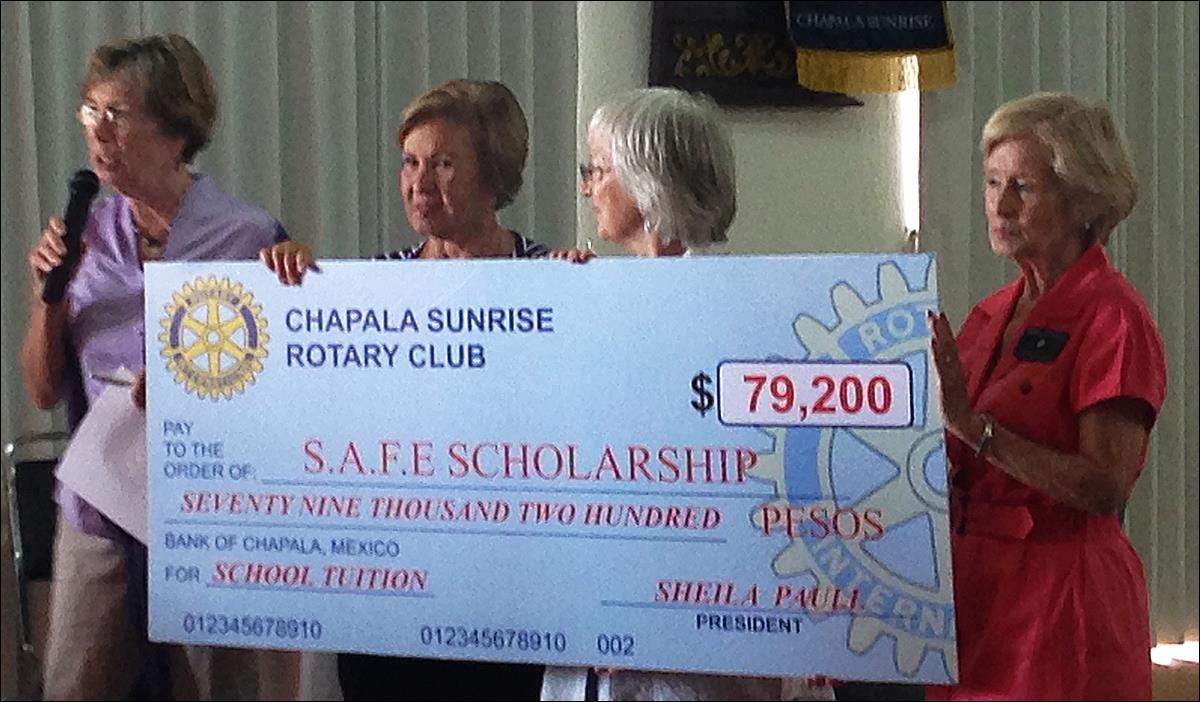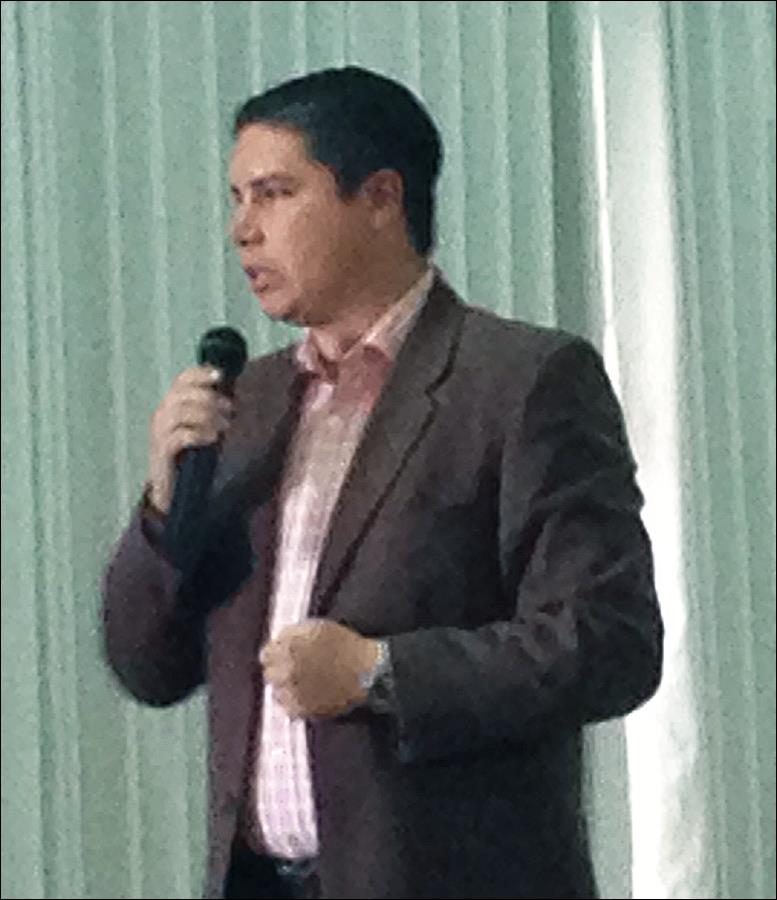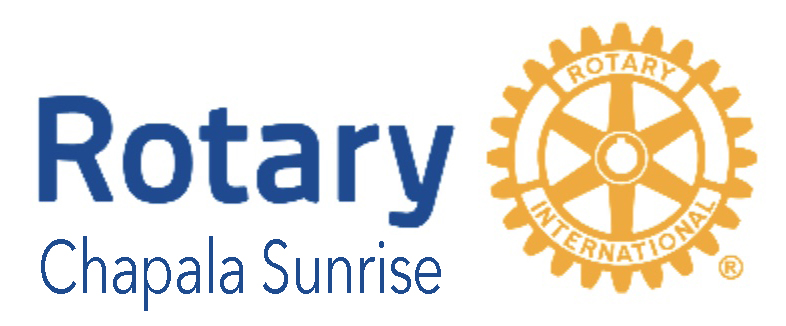June 30 CSRC Meeting Includes SAFE Scholarship Fund Presentation and Speech on Proposal for a Local Kidney Dialysis Facility
The CSRC meeting in Chapala on Thursday, June 30 included a presentation to the SAFE Scholarship fund and a presentation on the need for a local kidney dialysis facility.
In support of the SAFE scholarship program for needy students the Club has raised 79,000 pesos,in part from contributions from US Rotary clubs and part by our own fundraising efforts this year. SAFE program managers Ginger and Alicia have chosen the students and monitored their progress.
On Thursday the Club made the presentation o the funds to them. Ginger expressed her gratitude and stated that she can increase scholarships from 45 students to 90 students, however they still have a waiting list of qualified students. They fund students at all levels, and now have applications from San Juan Cosala as well. One of their volunteers is Louise Freeman who helps with sending out thank you notes.

In the same meeting Dr. Hector Navarrete Ambris, Atencion Medica of the Secretary of Health, spoke to us. He and his organization are looking at the problem of Kidney disease, which is very common in this area. The problem is found throughout Mexico, but here in Lakeside it’s worse, with 8-10% of the population affected. The causes can be diet-related, complications from diabetes, poor water or genetic.

They have been working with the Chapala Clinic and the Hospital in Jocotopec for a few years now. About 8,000 people in the Lakeside area have this problem, occurring across age groups, including many children. The best option is to try and prevent the disease, but for those with it we must find a way to help – kidney dialysis treatment. It costs between 1,800 and 3,500 pesos per dialysis session in Guadalajara, and many poor citizens cannot afford to pay this cost – poor people cannot afford dialysis, and some are dying as a result. Seguro Popular only pays for the first three sessions – enough for just one week. They are looking at putting in a dialysis unit in Jocotopec – proposals have been put into the Secretary of Health for Jalisco and he will decide. They’re also talking to the Federal Government to see if they can get money from them and approval of the project. They are also looking at a public/private approach. If a private firm established a Clinic then governments could well make an agreement to pay for its usage by the public. About 67 million pesos ($3.5M USD) is needed to establish a clinic, but that does not include the costs for maintaining it. The individual dialysis systems cost $200,000 USD each (and several are needed for clinic of this type), so they are often leased rather than purchased. You also need funding for an ongoing staff of workers and doctors to administer the treatments, and they have requested 15 million pesos ($800,000 USD) from the Federal government for those costs.
It will likely take up to 18 months for the government to approve their request. If there was a public/private partnership arrangement created it could be finalized in about six months.
It will likely take up to 18 months for the government to approve their request. If there was a public/private partnership arrangement created it could be finalized in about six months.
